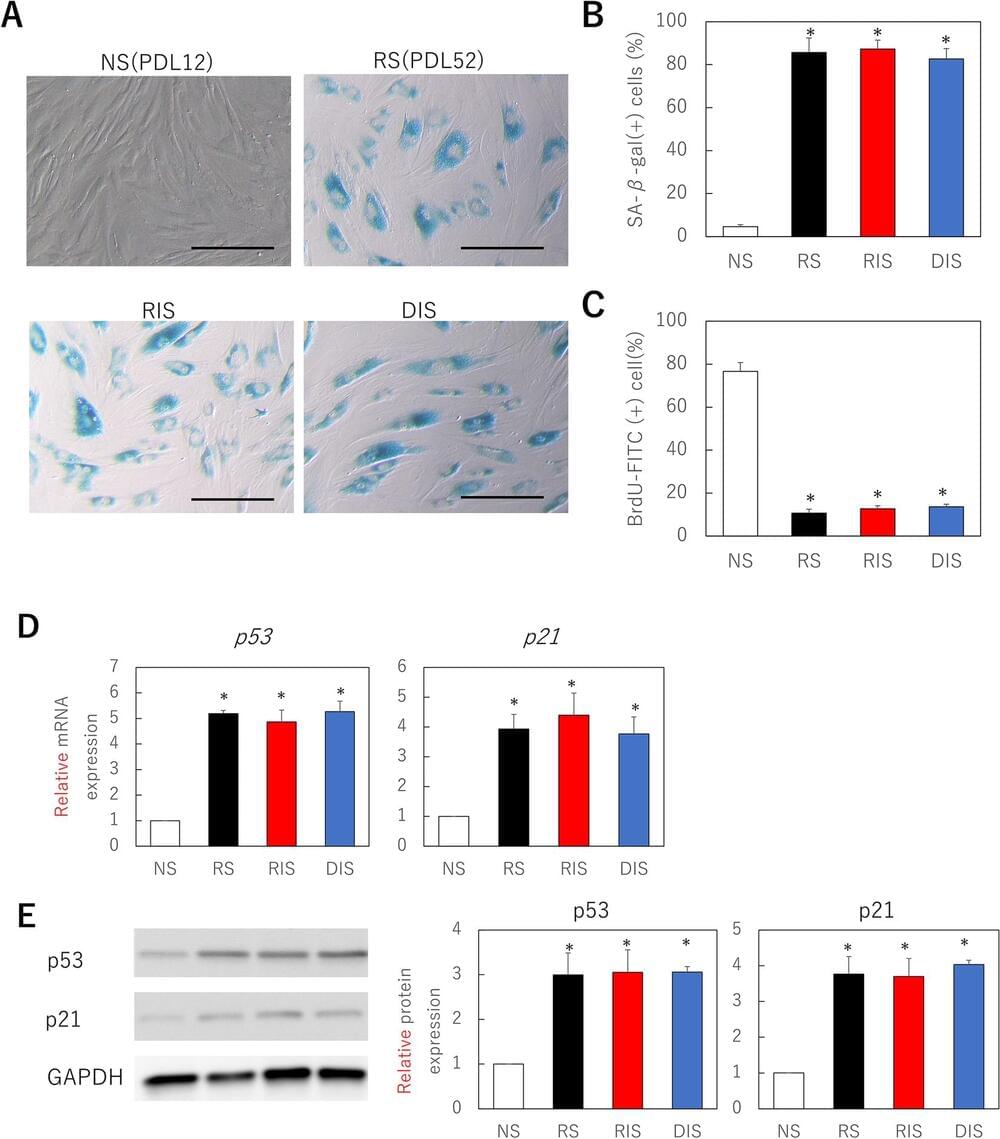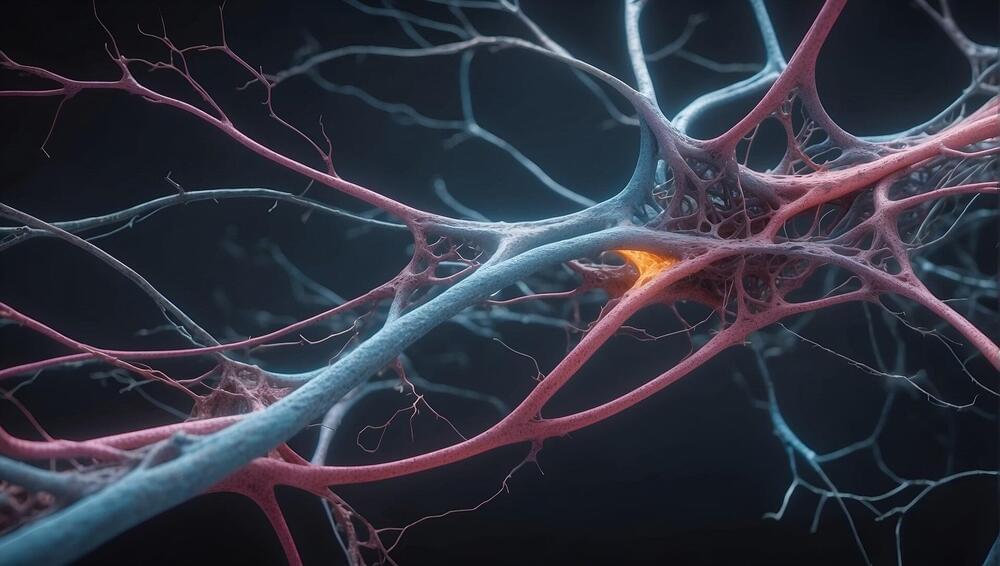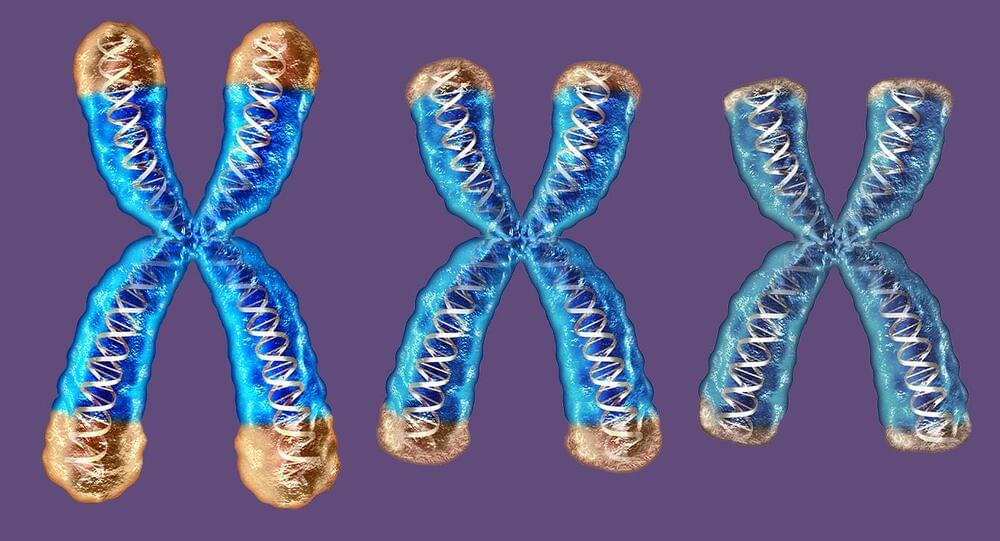Join us on Patreon! https://www.patreon.com/MichaelLustgartenPhDDiscount Links: NAD+ Quantification: https://www.jinfiniti.com/intracellular-nad-test/Use Cod…
Category: life extension – Page 131

Combined dasatinib and quercetin treatment contributes to skin rejuvenation through selective elimination of senescent cells in vitro and in vivo
The skin’s protective functions are compromised over time by both endogenous and exogenous aging. Senescence is well-documented in skin phenotypes, such as wrinkling and sagging, a consequence of the senescence-associated secretory phenotype (SASP) that involves the accumulation of senescent fibroblasts, chronic inflammation, and collagen remodeling. Although therapeutic approaches for eliminating senescent cells from the skin are available, their efficacy remains unclear. Accordingly, we aimed to examine the effects of dasatinib in combination with quercetin (D + Q) on senescent human skin fibroblasts and aging human skin. Senescence was induced in human dermal fibroblasts (HDFs) using approaches such as long-term passaging, ionizing radiation, and doxorubicin treatment. The generated senescent cells were treated with D + Q or vehicle.

Major Fusion Milestone: Princeton Scientists Discover Game-Changer in Reactor Design
New research indicates that plasma fusion heat spreads more evenly in tokamak reactors, suggesting a reduced risk of damage to critical components, thereby improving reactor longevity and efficiency.
According to researchers from the U.S. Department of Energy’s (DOE) Princeton Plasma Physics Laboratory (PPPL), Oak Ridge National Laboratory, and the ITER Organization (ITER), the intense exhaust heat produced by fusing plasma in a commercial-scale reactor might not be as damaging to the reactor’s interior as previously believed.
“This discovery fundamentally changes how we think about the way heat and particles travel between two critically important regions at the edge of a plasma during fusion,” said PPPL Managing Principal Research Physicist Choongseok Chang, who led the team of researchers behind the discovery. A new paper detailing their work was recently published in the journal Nuclear Fusion, following previous publications on the subject.

Key mechanisms identified for regeneration of neurons
Neurological disorders, such as trauma, stroke, epilepsy, and various neurodegenerative diseases, often lead to the permanent loss of neurons, causing significant impairments in brain function. Current treatment options are limited, primarily due to the challenge of replacing lost neurons.
Direct neuronal reprogramming, a complex procedure that involves changing the function of one type of cell into another, offers a promising strategy.
In cell culture and in living organisms, glial cells—the non-neuronal cells in the central nervous system—have been successfully transformed into functional neurons. However, the processes involved in this reprogramming are complex and require further understanding. This complexity presents a challenge, but also a motivation, for researchers in the field of neuroscience and regenerative medicine.

Tesla Model Y tops Sweden auto registrations in the first half of 2024
The Tesla Model Y has topped Sweden’s automotive registrations regardless of powertrain type in the first half of 2024, as shown in new data.
The Model Y was the most-registered vehicle in Sweden in the first six months of this year, according to data from Mobility Sweden reported by Carup on Monday. The Model Y topped the charts overall with 7,386 units registered, despite a 20 percent decline in overall EV sales. The Model 3 landed 14th overall in the six-month period, while electric options from Volvo, Toyota, Polestar, and Volkswagen were also some of the most registered.
“It is gratifying that the proportion of electric cars reached the best for the year in June, but at the same time we see a stagnant market, which leads to a gradually aging vehicle fleet,” said Mattias Bergman, CEO of Mobility Sweden. “In order to meet the climate goals and strengthen Sweden’s competitiveness, it is crucial that electrification is accelerated.”
Visceral Fat Removal Extends Lifespan
Join us on Patreon! https://www.patreon.com/MichaelLustgartenPhDDiscount Links: NAD+ Quantification: https://www.jinfiniti.com/intracellular-nad-test/Use Cod…

Activating molecular target reverses multiple hallmarks of aging
MD Anderson researchers identify molecule that reduces age-related inflammation and improves brain and muscle function in preclinical models.
MD Anderson News Release June 21, 2024
Researchers at The University of Texas MD Anderson Cancer Center have demonstrated that therapeutically restoring…
The study, published today in Cell, identified a small molecule compound that restores physiological levels of telomerase reverse transcriptase (TERT), which normally is repressed with the onset of aging. Maintenance of TERT levels in aged lab models reduced cellular senescence and tissue inflammation, spurred new neuron formation with improved memory, and enhanced neuromuscular function, which increased strength and coordination.
The researchers show that TERT functions not only to extend telomeres, but also acts as a transcription factor to affect the expression of many genes directing neurogenesis, learning and memory, cellular senescence, and inflammation.
Scientists Discuss Longevity Interventions & Optimisms | 45 — K-Lab Reunion
Check the description to go a little faster.

Ray Kurzweil explains how AI makes radical life extension possible
Most of our progress in disease treatment and prevention to date has been the product of the linear process of hit-or-miss efforts to find useful interventions. Because we have lacked tools for systematically exploring all possible treatments, discoveries under this paradigm have owed a lot to chance. Likely the most notable chance breakthrough in medicine was the accidental discovery of penicillin — which opened up the antibiotic revolution and has since saved perhaps as many as 200 million lives. But even when discoveries aren’t literally accidental, it still takes good fortune for researchers to achieve breakthroughs with traditional methods. Without the ability to exhaustively simulate possible drug molecules, researchers have to rely on high-throughput screening and other painstaking laboratory methods, which are much slower and more inefficient.
To be fair, this approach has brought great benefits. A thousand years ago, European life expectancy at birth was just in the twenties, since so many people died in infancy or youth from diseases like cholera and dysentery, which are now easily preventable. By the middle of the nineteenth century, life expectancy in the United Kingdom and the United States had increased to the forties. As of 2023, it has risen to over eighty in much of the developed world. So, we have nearly tripled life expectancy in the past thousand years and doubled it in the past two centuries. This was largely achieved by developing ways to avoid or kill external pathogens — bacteria and viruses that bring disease from outside our bodies.
Today, though, most of this low-hanging fruit has been picked. The remaining sources of disease and disability spring mostly from deep within our own bodies. As cells malfunction and tissues break down, we get conditions like cancer, atherosclerosis, diabetes, and Alzheimer’s. To an extent we can reduce these risks through lifestyle, diet, and supplementation — what I call the first bridge to radical life extension. But those can only delay the inevitable. This is why life expectancy gains in developed countries have slowed since roughly the middle of the twentieth century. For example, from 1,880 to 1900, life expectancy at birth in the United States increased from about thirty-nine to forty-nine, but from 1980 to 2000 — after the focus of medicine had shifted from infectious disease to chronic and degenerative disease — it only increased from seventy-four to seventy-six.